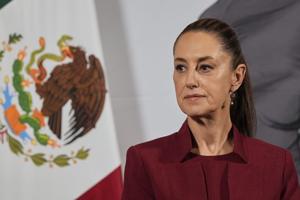Lynzi Hallett is juggling four part-time jobs so she can cover for her tuition as a full-time student. The 21-year-old doesn’t glorify the grind, but she’s dedicated to getting her associate degree in nursing at Weber State University without getting off track. She’s close, but she’s paying for college on her own, without any assistance from family, after growing up under the poverty line for much of her childhood.
She’s the kind of student that Weber State President Brad Mortensen said he wants to attend the school most but also worries the most about. That’s because he recognizes the financial strain she and others like her are under is also a barrier to their education — one that can cause them to take a break from school or need to drop out. It’s why he’s pushing forward with a new and cheaper tuition model aimed directly at those students.

And this summer semester, Hallett will see the effects. The plan has already been heralded as “innovative” by the state’s commissioner over higher education . And it’s drawn the attention of Utah lawmakers.
Mortensen hopes it might also later attract an investment of state money to expand it and make it more helpful to students. “I really think it’s worth trying,” he recently told The Salt Lake Tribune. For now, the standout idea is to not increase tuition for two-year students seeking their associate degrees who have fewer than 60 credit hours of classwork completed.
The vision for the future is to eventually decrease the price tag — substantially. Weber State unveiled the plan at annual tuition hearings last month before the Utah Board of Higher Education and got unanimous approval. The Ogden school is considered a dual-mission institution, which means it serves students getting two-year associate degrees and standard four-year bachelor’s degrees.
Enrollment is about perfectly split between the two, so when the plan takes effect for this upcoming summer semester in May, it’ll mean no tuition increase for roughly 16,000 students . “I still think that the sticker price itself is a barrier, especially for first-generation students. We’re trying to do what’s right by the students and do what higher ed should be doing,” Mortensen said.
For Hallett, it’s enough to where she’ll be able to drop one of her jobs: working as a tutor to other students. She’ll continue her other positions as a licensed practical nurse at McKay-Dee Hospital, a nurse apprentice at St. Mark’s Hospital and an assistant at an art gallery.
“I’ll be able to take some time off,” she said, “and have more time for studying.” (Lynzi Hallett) Lynzi Hallett is a nursing student at Weber State University. For summer semester 2025, she'll pay a frozen tuition rate meant to help students getting their associate degrees at a lower cost.
What will it save students? Before the change, all students were being charged the same four-year tuition cost. Mortensen feels strongly about that: “It’s not right.” Those trying to earn an associate degree, he said, should instead be paying something more comparable to the price offered at a community college.
There are two community colleges in Utah that focus on two-year degrees: Salt Lake Community College in Salt Lake County and Snow College in central Utah. The average price, including fees, for a student at SLCC is $4,542 per year. At Snow College, the cheapest institution in the state, it’s $4,437.
Even with freezing its tuition — and both of those schools raising theirs for this coming academic year — Weber State still sits about $2,000 above the cost of each annually. The frozen rate at Weber, which will now be for students with fewer credits, is $6,557. Separating the costs between the two types of degree-seekers is known as a “differential tuition” model.
It’s common for more expensive programs , like a business degree, within four-year programs at a university. But it hasn’t widely been used to split the price between associate and bachelor’s students. At Weber, tuition went up, as is standard, for students at the school working toward their bachelor’s.
But now, students with fewer credits like Hallett will save about $70 this summer — or $135 across a year. It’s not a huge amount, Mortensen acknowledges, but it’s a start. And Hallett has enough money saved up, in addition to some scholarships, that she describes it as “a weight off my chest.
” Mortensen had initially presented a proposal to the Utah Board of Higher Education to ask for $6.1 million in state funding to significantly offset the cost for associate degree students in a pilot program, to see if it helped with degree completion. That didn’t make it into the board’s final budget request to the Legislature this year.
It would have meant students were paying $1,000 less each year, but it didn’t go completely unnoticed. “You have a request that caught my eye,” said Sen. Mike McKell during a February presentation by Weber to the Higher Education Appropriations Subcommittee.
The Republican lawmaker from Spanish Fork called it his “favorite request” and lamented that it didn’t have more support from the higher education board — where there wasn’t consensus from the presidents of the other public colleges and universities in the state to move it forward. McKell was involved when the Legislature in both 2018 and 2022 commissioned reports from the National Center for Higher Education Management Systems on community college success and strategies for higher education in the state. That group found a “worsening imbalance” in Utah when it came to bachelor’s degree completion and associate degree completion.
One of the recommendations was for differential tuition proposals like Weber’s, but, McKell said, “we didn’t have the political will to work on it at the time.” He called that a major mistake and a detriment to addressing the graduation rates that state lawmakers have grown adamant about in recent years. “We entirely ignored the recommendations,” he added.
Taking the first step Mortensen said he felt it was “too important of an initiative to not try to move forward” in some way. That’s why, to “keep the conversation alive,” he put forward the smaller freeze for tuition rates for associate degree students. Weber County, he noted, has the lowest associate degree completion rate among the most populated counties in the state, which sit along the Wasatch Front.
Weber and Davis counties also have the highest rate of residents who attended some college but didn’t complete a degree. According to U.S.
Census data, 28% of residents in the area have a bachelor’s degree or further education. It’s not feasible for most of the residents in the area, he said, to go to SLCC or Snow for an associate degree because of the distance. But it’s not reasonable to spend $2,000 more per year to get that at Weber.
“If we can get some state dollars flowing for this, that’s one way to take the rate down instead of just keeping it flat,” Mortensen said. In the meantime, he’ll be tracking whether more students come to Weber for an associate degree under the tuition freeze, and if more graduate. He hopes it may also give more students the confidence to finish a four-year degree next.
That’s Hallett’s plan. She should have her associate degree in nursing finished in August. And she wants to go for a bachelor’s in the field after that.
Mortensen said he’s a little afraid the initial rate won’t be enough to move the needle. Studies out of Michigan and Texas showed that a $1,000 difference — like what he asked for with the larger proposal — is needed to incentivize students. Michigan now gives all lower-income students a $1,000 “bonus scholarship” to be used for community college.
(Francisco Kjolseth | The Salt Lake Tribune) Brad Mortensen, president at Weber State University, attends a meeting of the Utah Board of Higher Education in Salt Lake City on Friday, March 28, 2025. At the same time, to offset costs, Mortensen is working to make scholarship programs at the school stretch as far as possible. Since 2010, the school has run the Dream Weber program , which offers free tuition to students whose annual household income is $40,000 or less, essentially by covering what remains after federal grants.
That, too, was not fully embraced by other colleges in the state when it launched. But now, some have followed suit with their own similar programs. Mortensen said maybe the same will happen with the tuition model — and perhaps even on a nationwide scale.
The closest thing to it now in Utah is a slightly lower price for associate degree-students at Utah State University Eastern . But that’s not really intentional; it’s a vestige after the College of Eastern Utah, which wasn’t financially solvent, was absorbed in 2010 into USU and renamed. Utah Valley University , when it was previously a state college, used to offer lower tuition.
But when it was re-designated as a university it raised rates across the board. Mortensen was a staff member at the Utah System of Higher Education then and watched it happen in 2008. “I’ve seen it go the wrong way,” he said.
Now, UVU’s tuition is about the same as Weber’s. If all four-year schools across the state leaned in and launched a differential tuition model, Mortensen estimates it would cost the state about $20 million to test in a pilot. But that’s a large request at a time when state lawmakers have grown increasingly critical of the cost of higher education.
This year, they approved at $60.5 million cut across the eight public colleges and universities in the state. Weber State is seeing a proportional $6.
7 million share of that. The school has said it is cutting administrative positions to try to come up with the money. State leaders have said that institutions can get their share back, so long as it’s reinvested in high-demand and high-wage programs.
Mortensen understands that’s going to be a lift for the university, but he also recognizes the weight students are carrying. “You hear it talking to our students,” he said. “The financial burden is either the one that keeps them from starting school or is the one that causes them to drop out.
” He added: “Most of the time they think, ‘Well, I need to work a little bit more,’ or ‘I need to take a semester off and come back.’ But every time a student says that, it’s hard to overcome.” No student, he said, no matter how dedicated, can keep juggling perfectly forever.
And Mortensen believes they shouldn’t have to..
Top

This Utah university is adopting a unique tuition plan to save students money. Could it be a model for all schools?

Weber State is adopting a unique tuition plan to save students money. It's been called “innovative” by the state’s commissioner over higher education. And it’s drawn the attention of Utah lawmakers. Could it be a model for all schools in the future?











